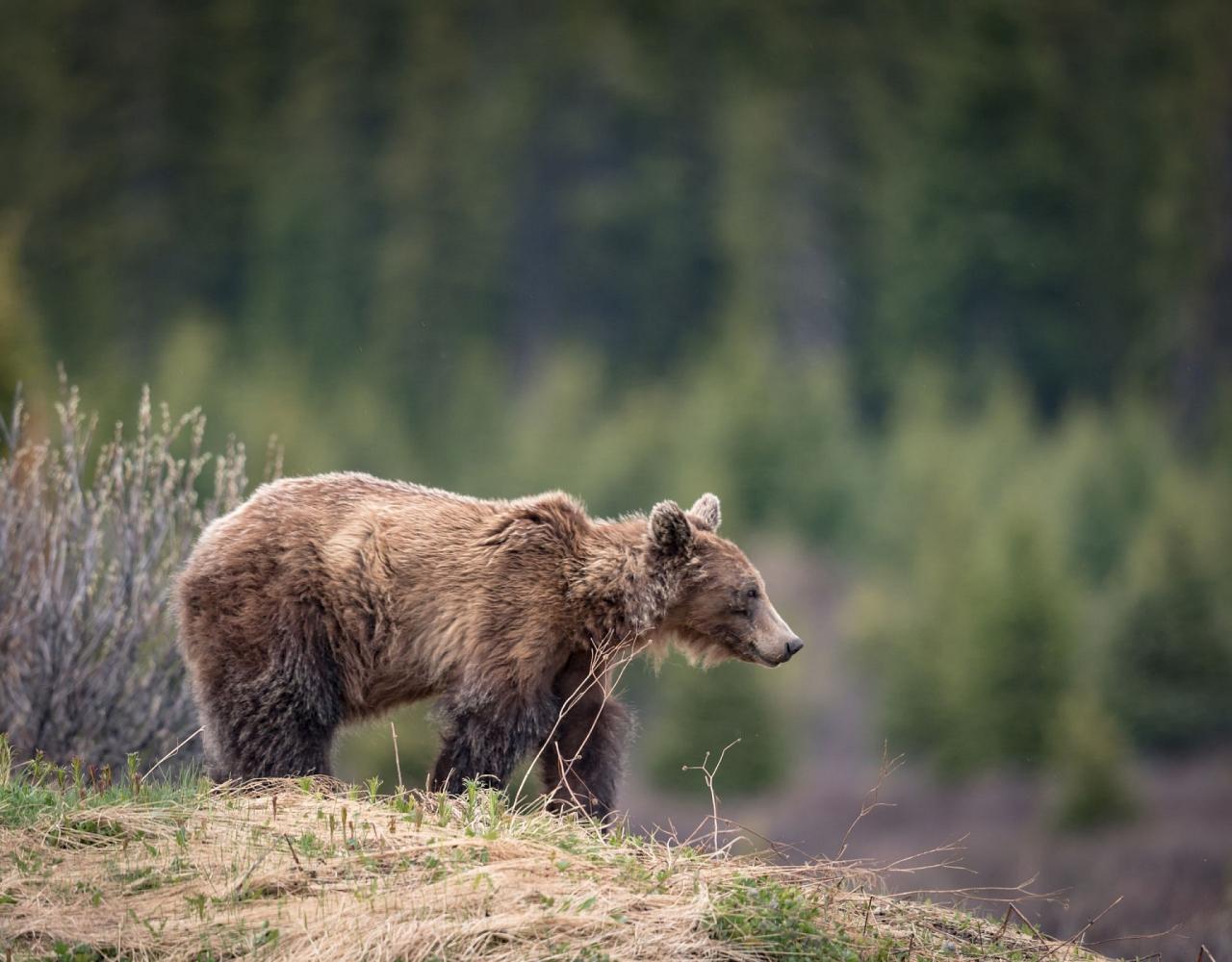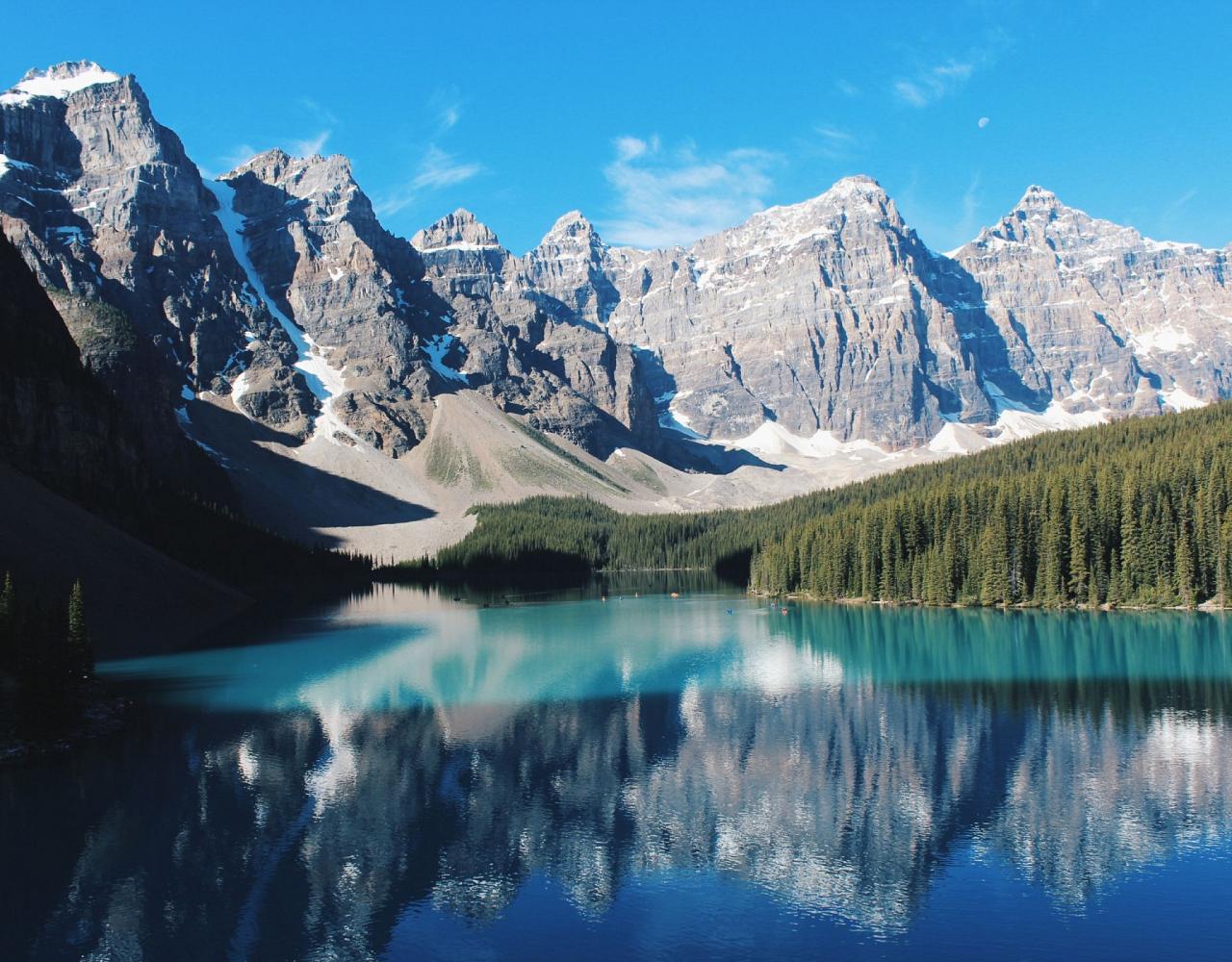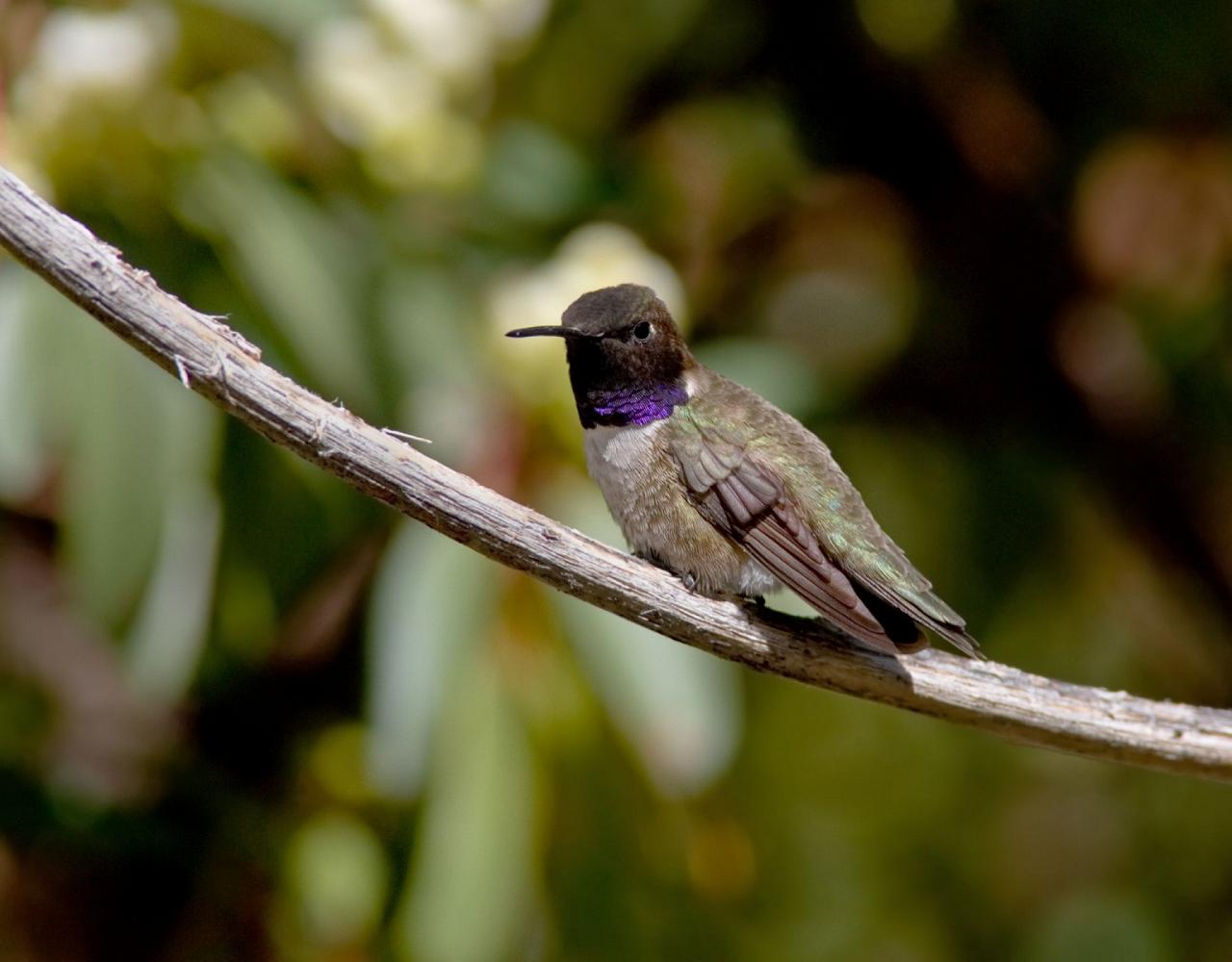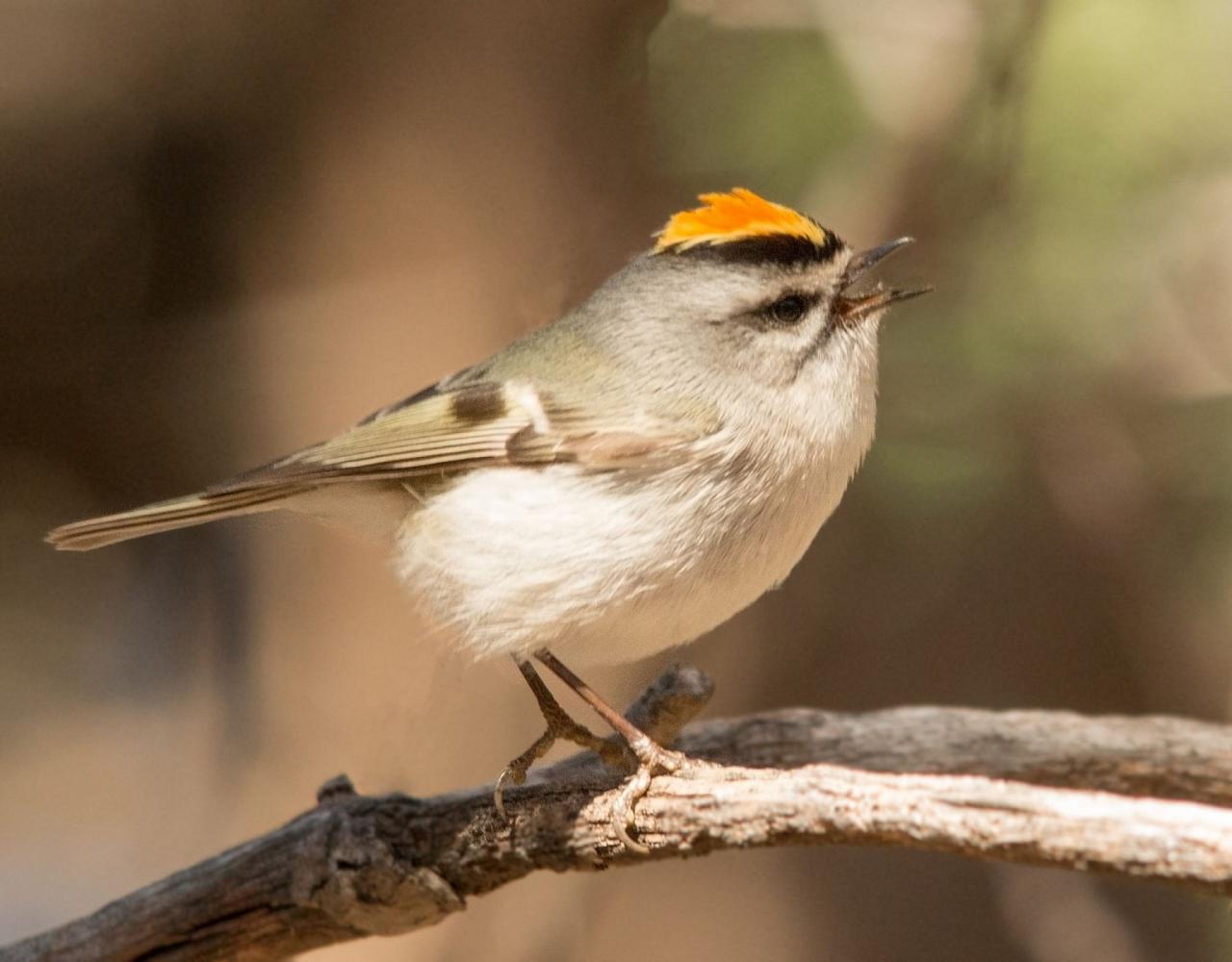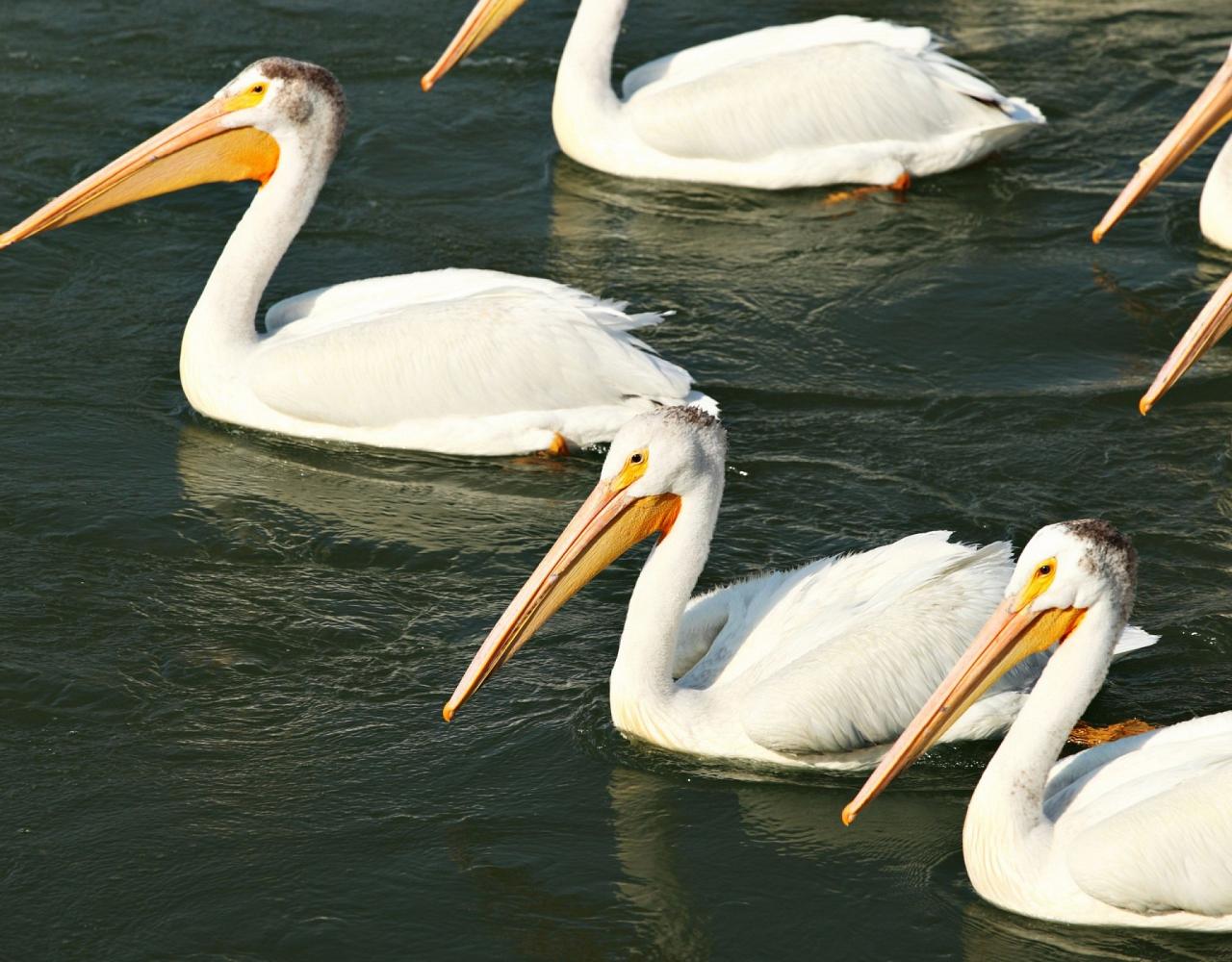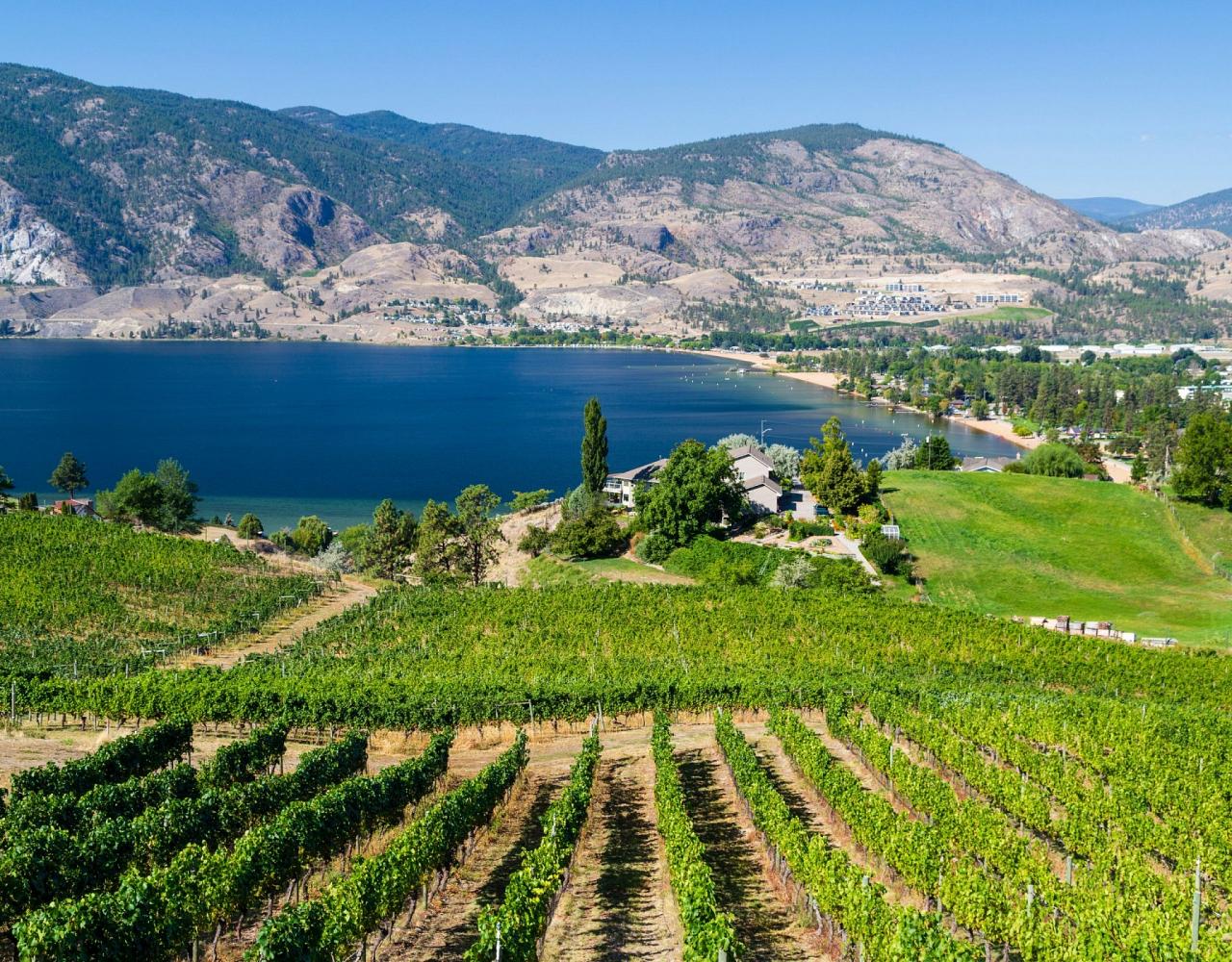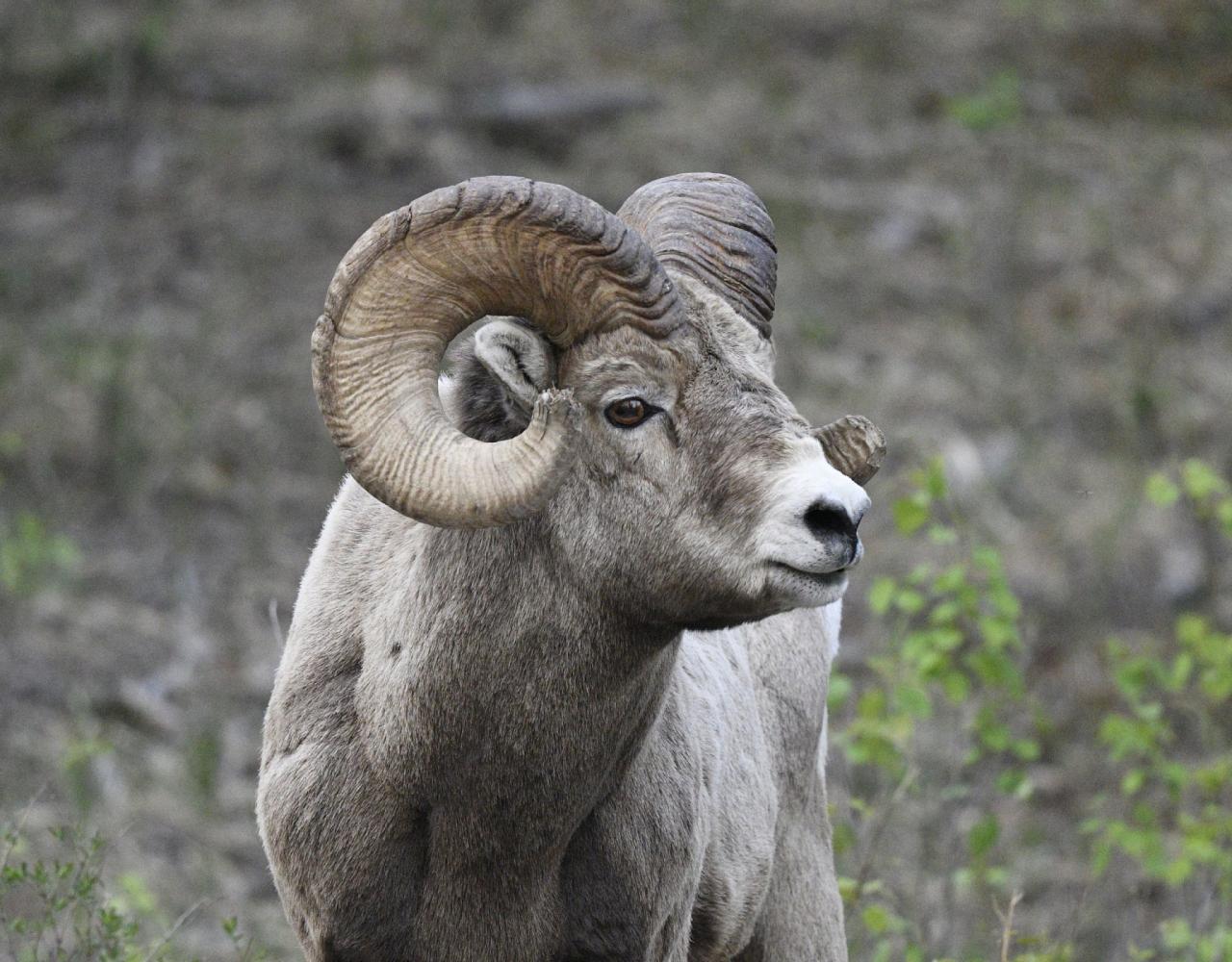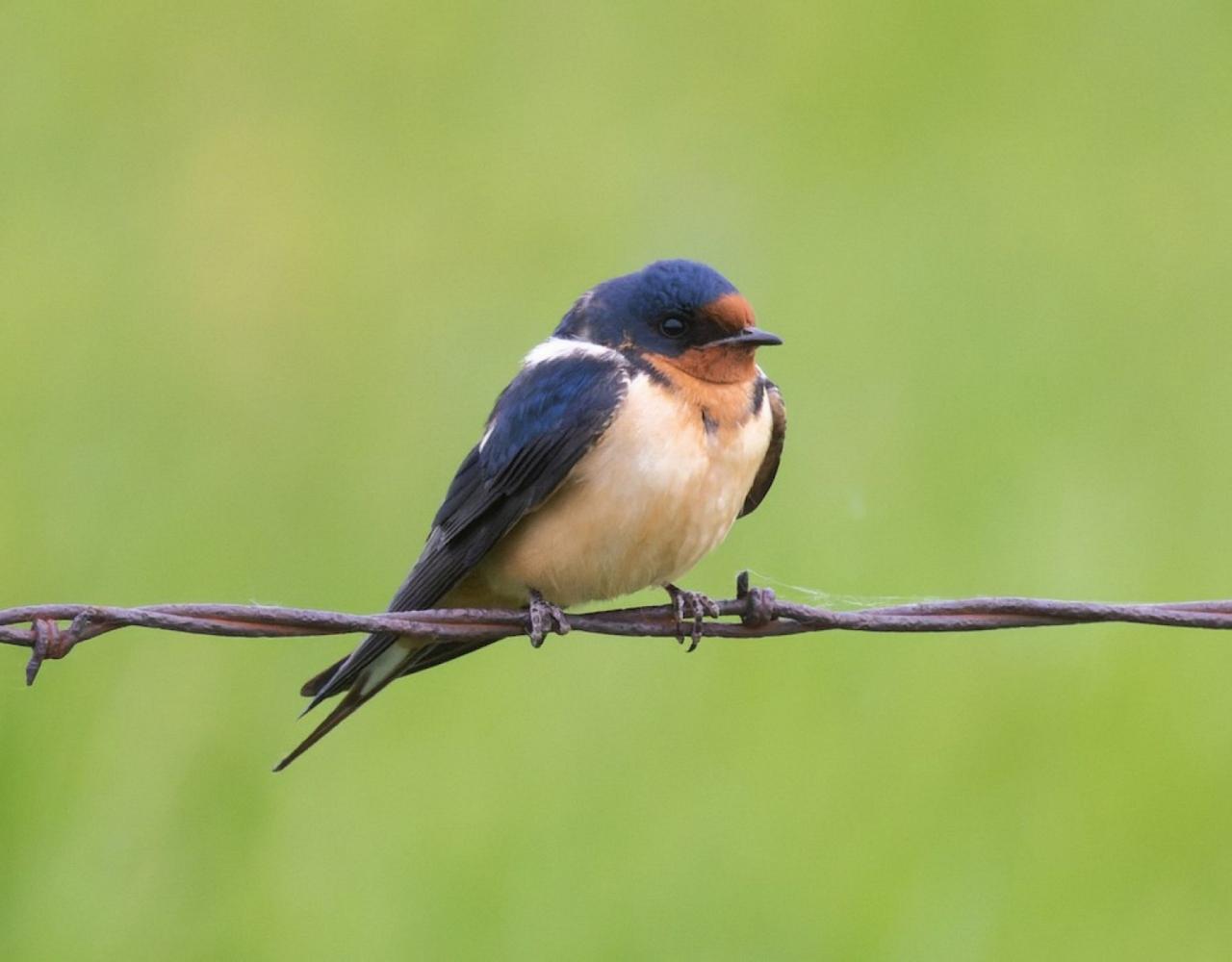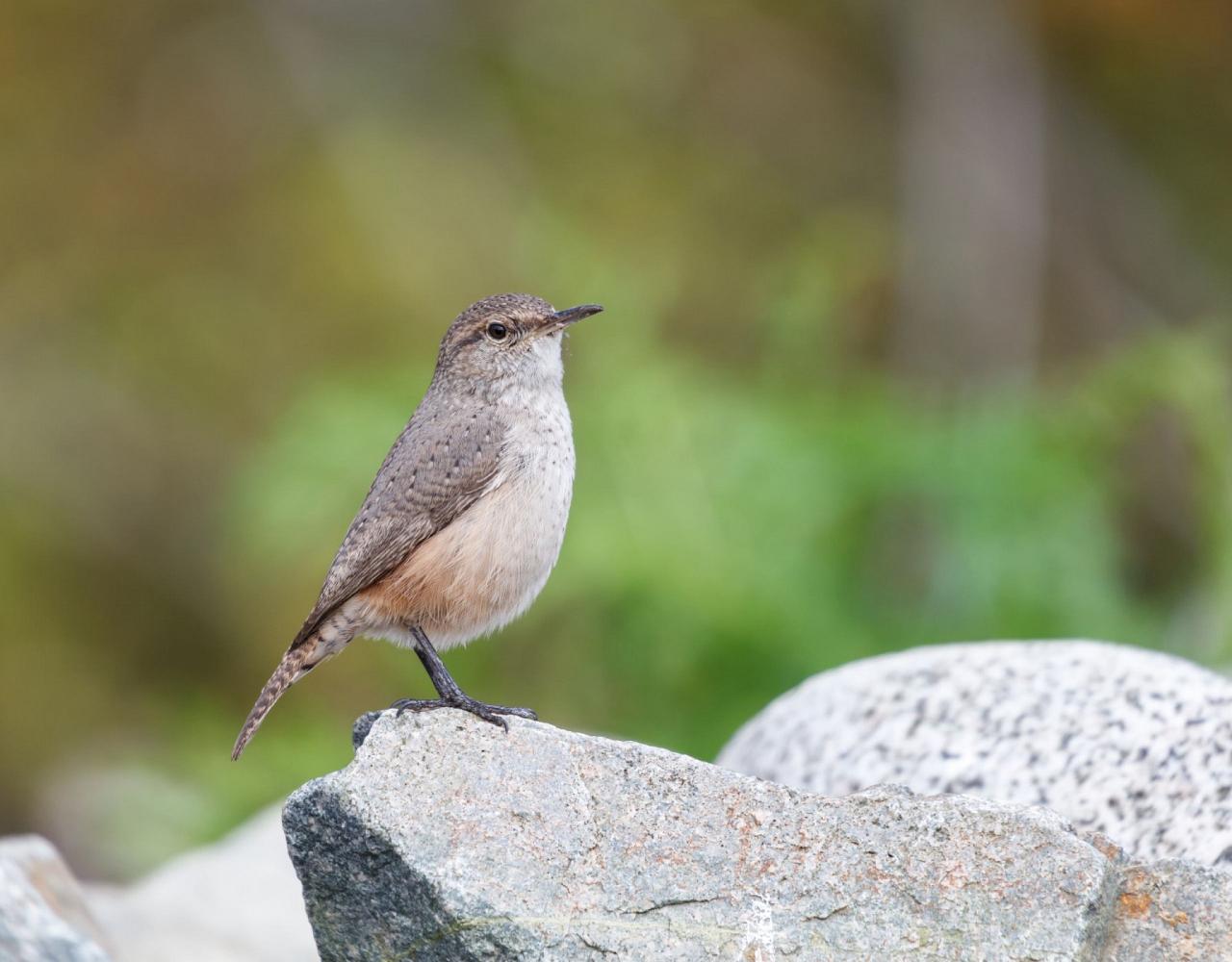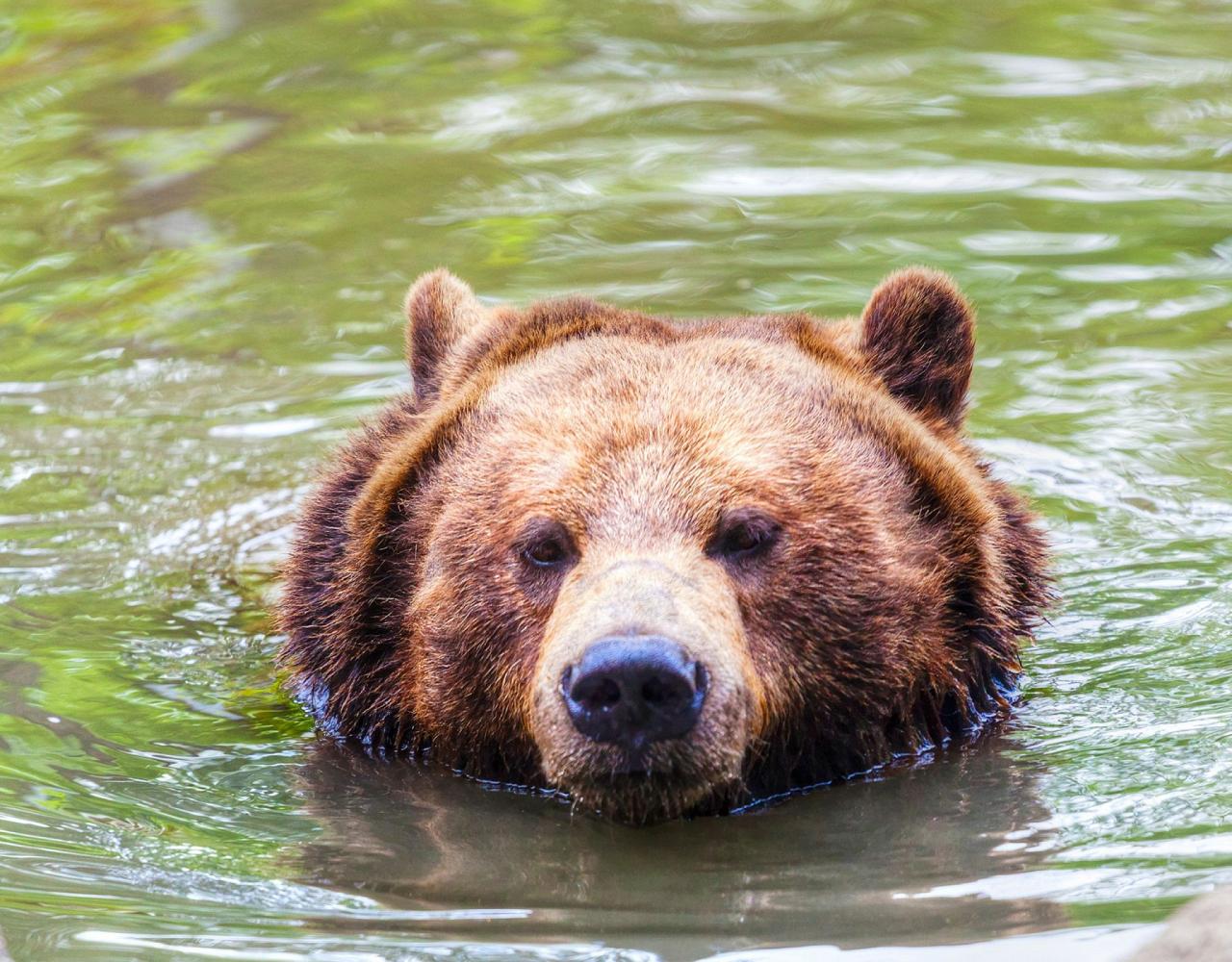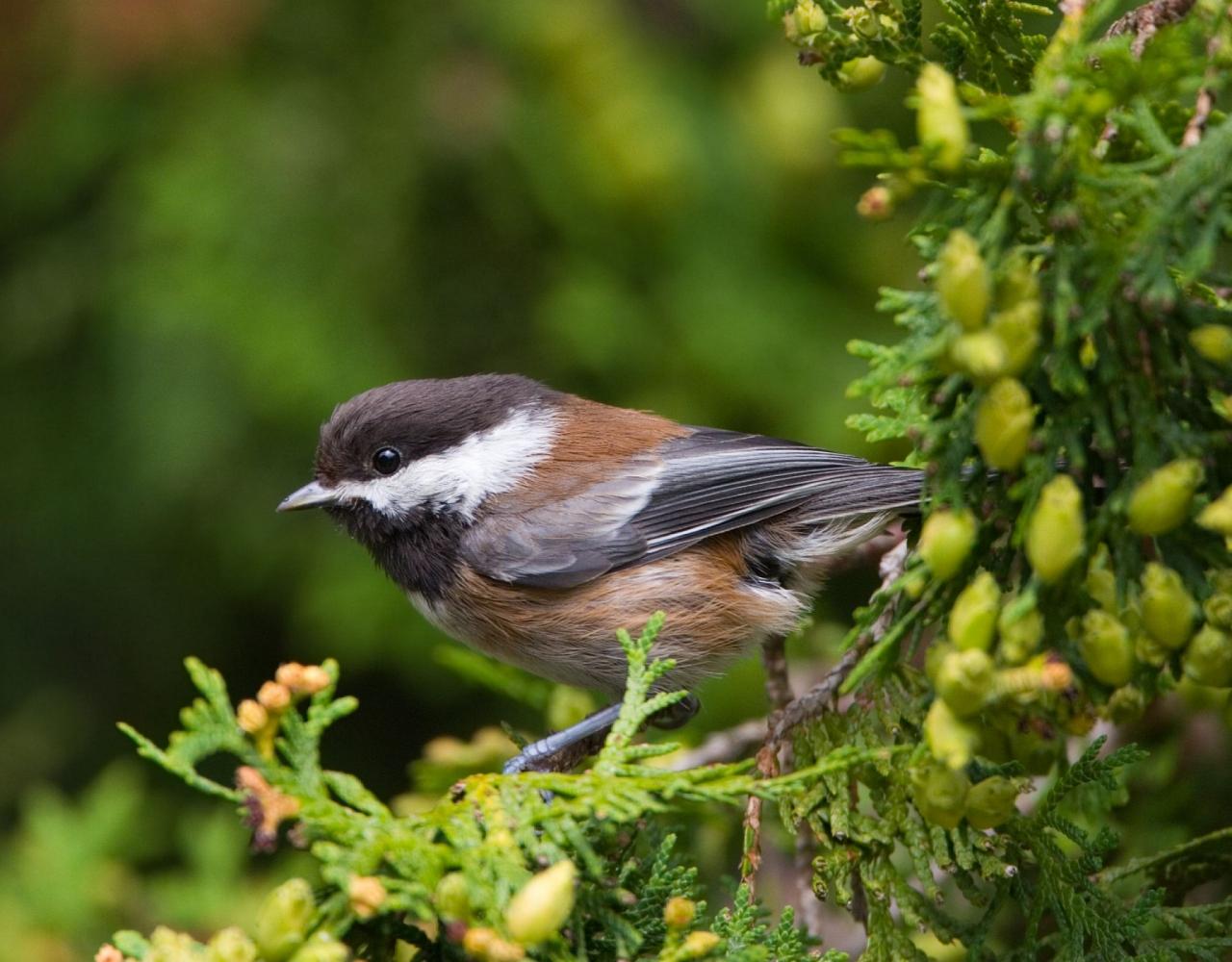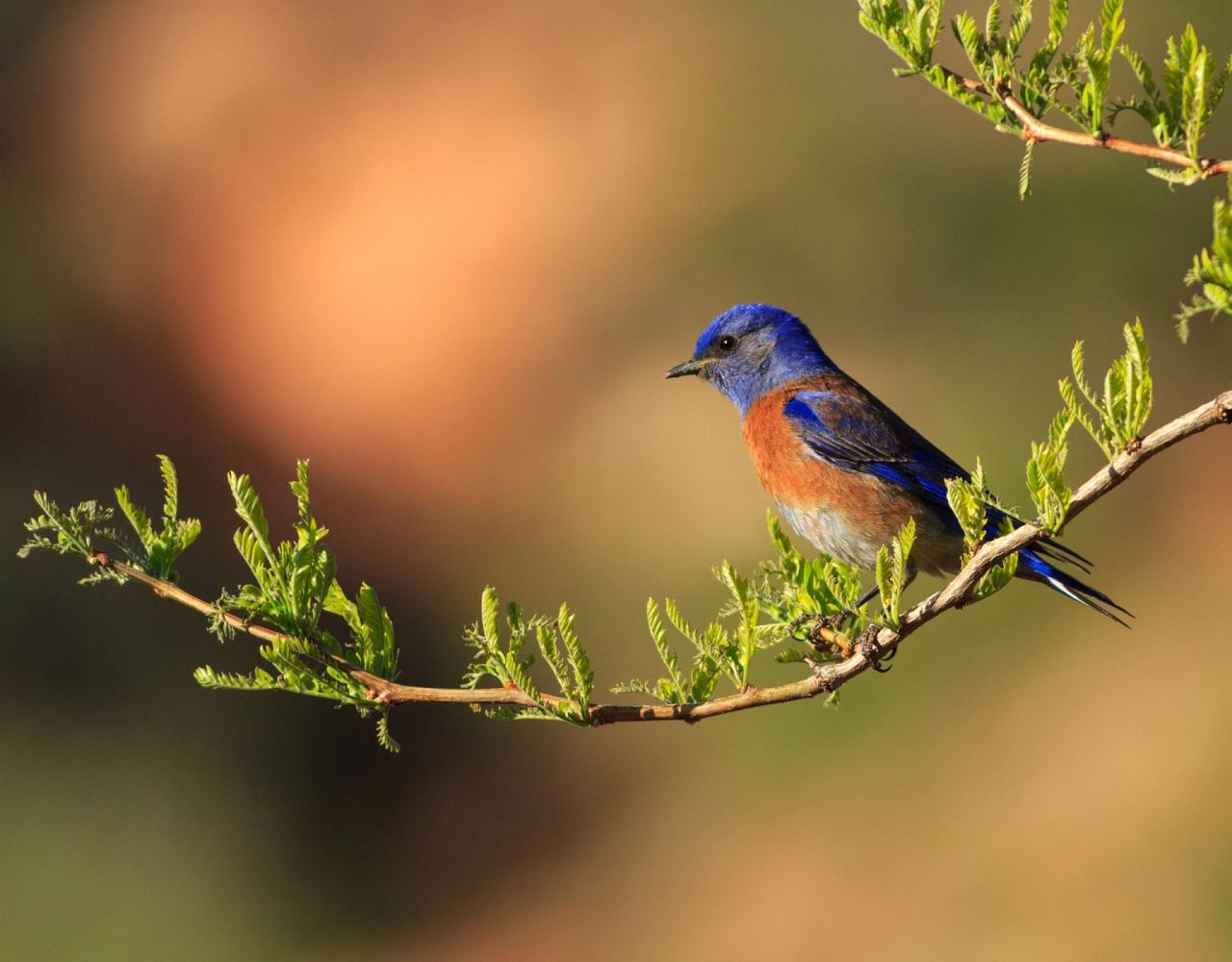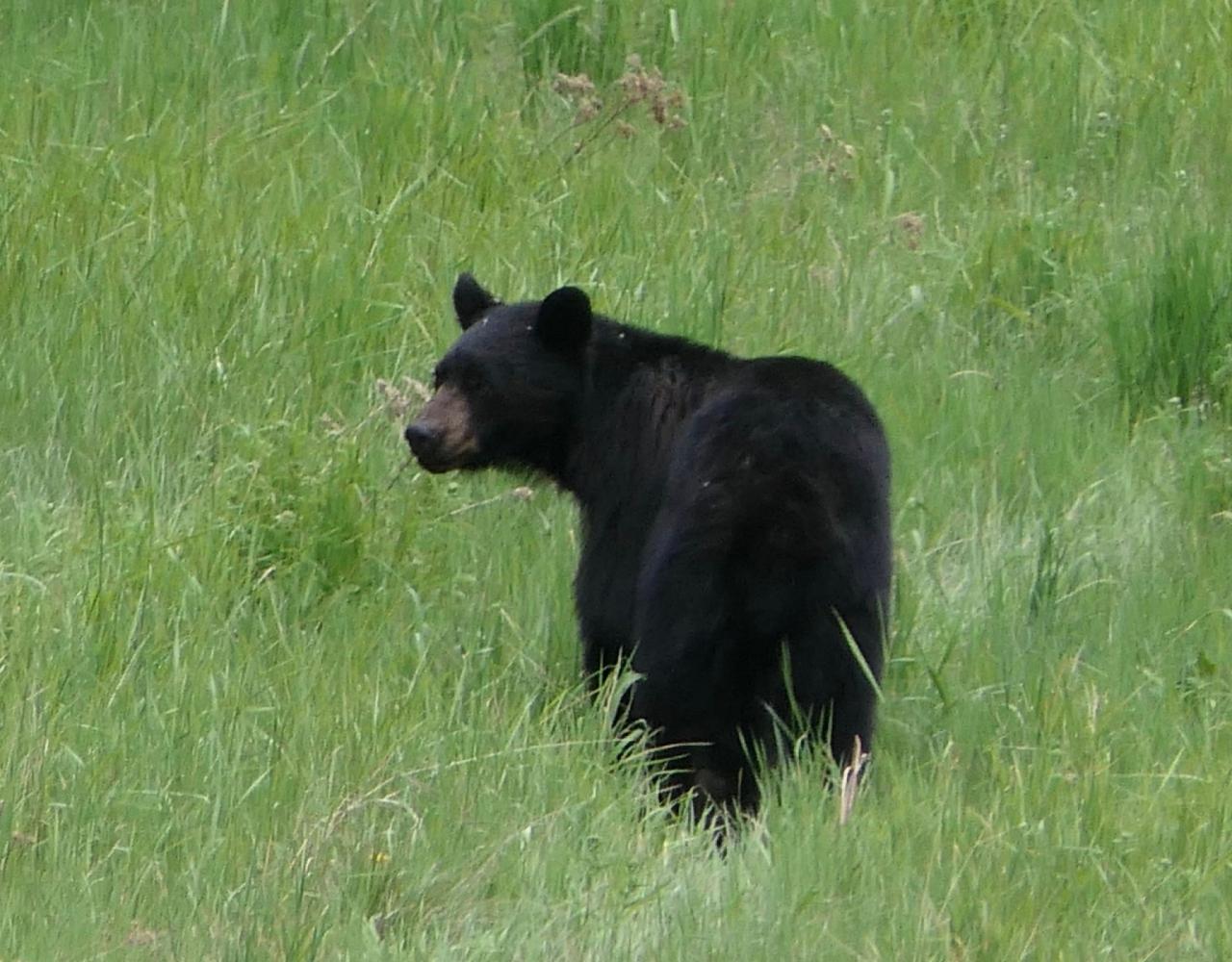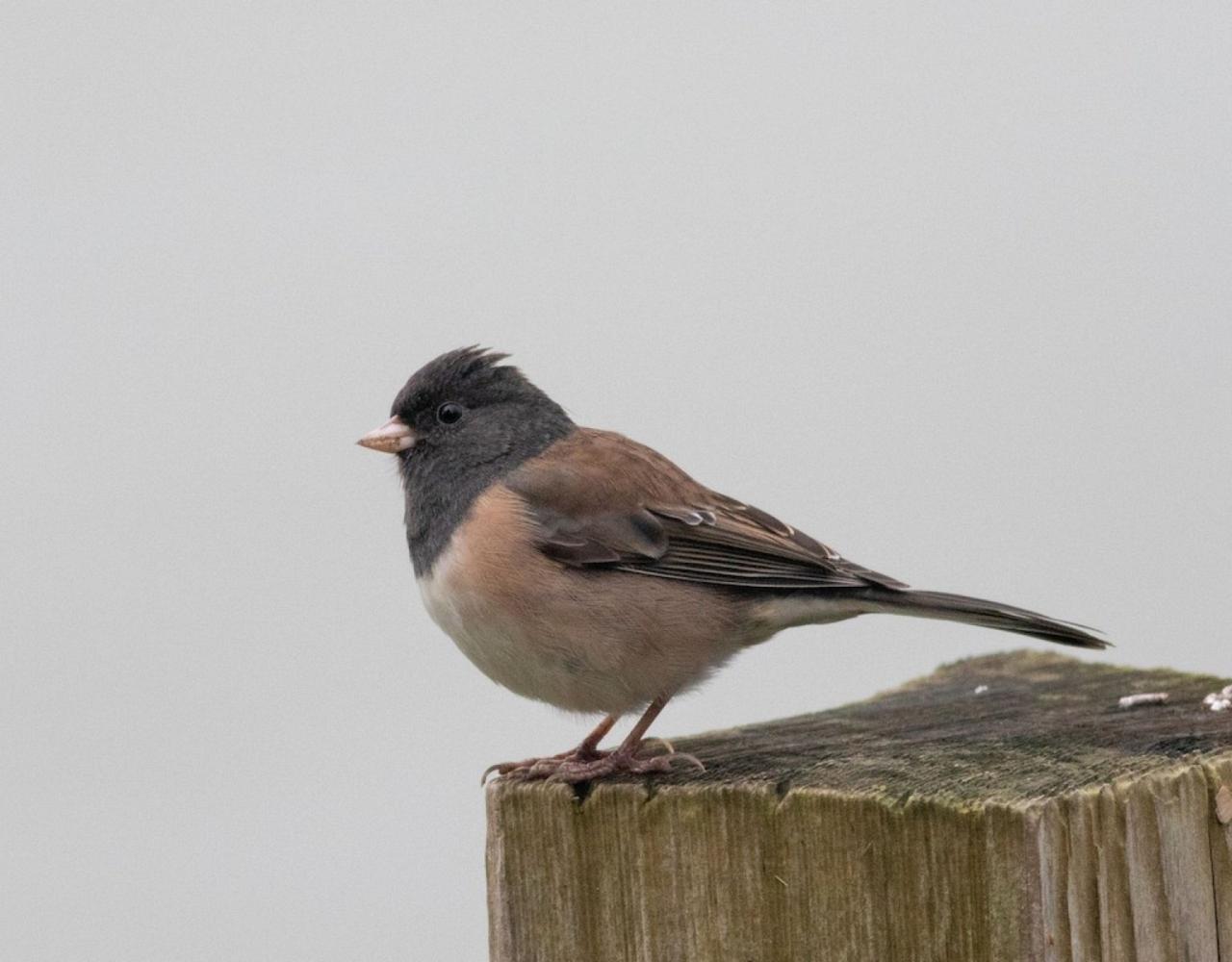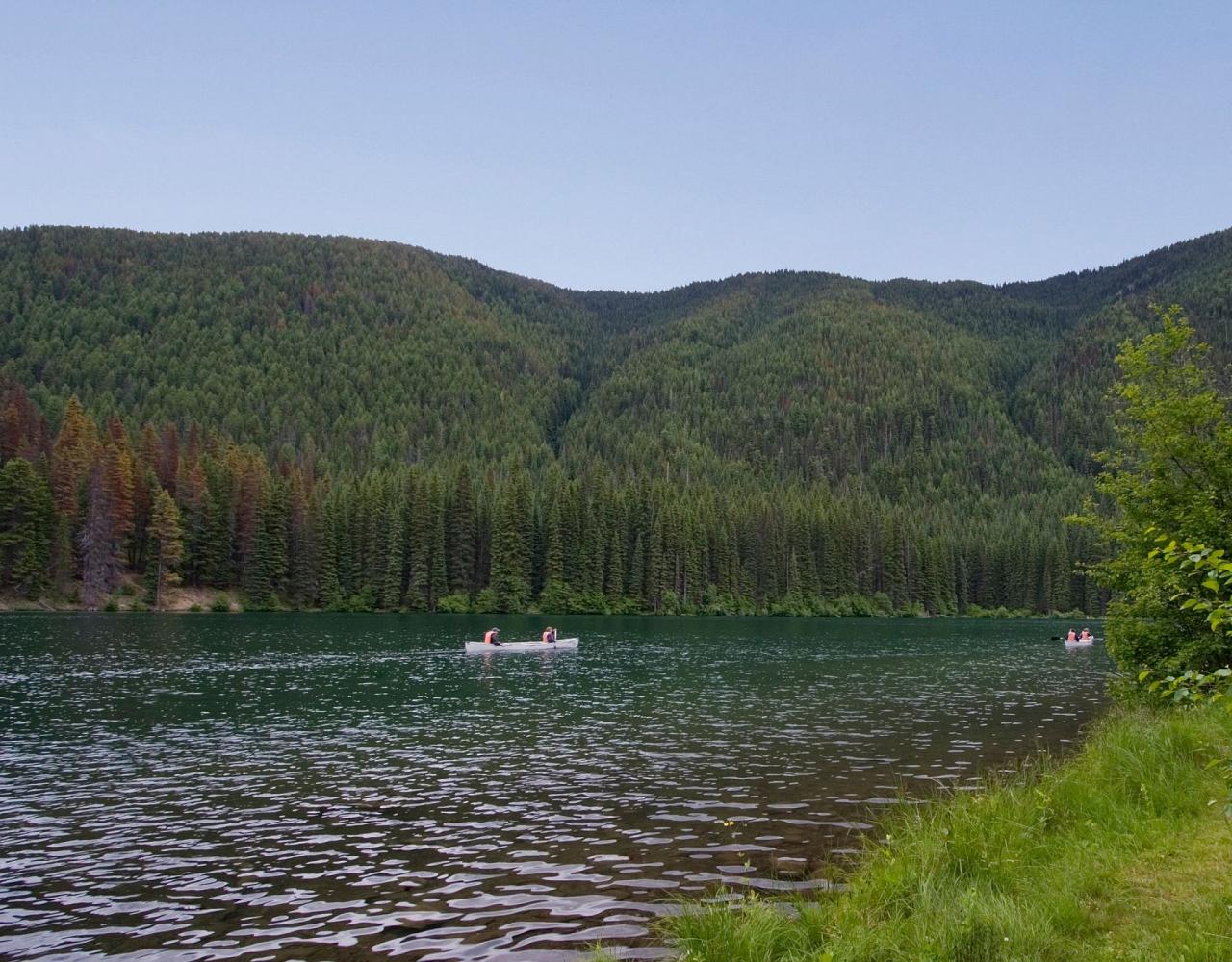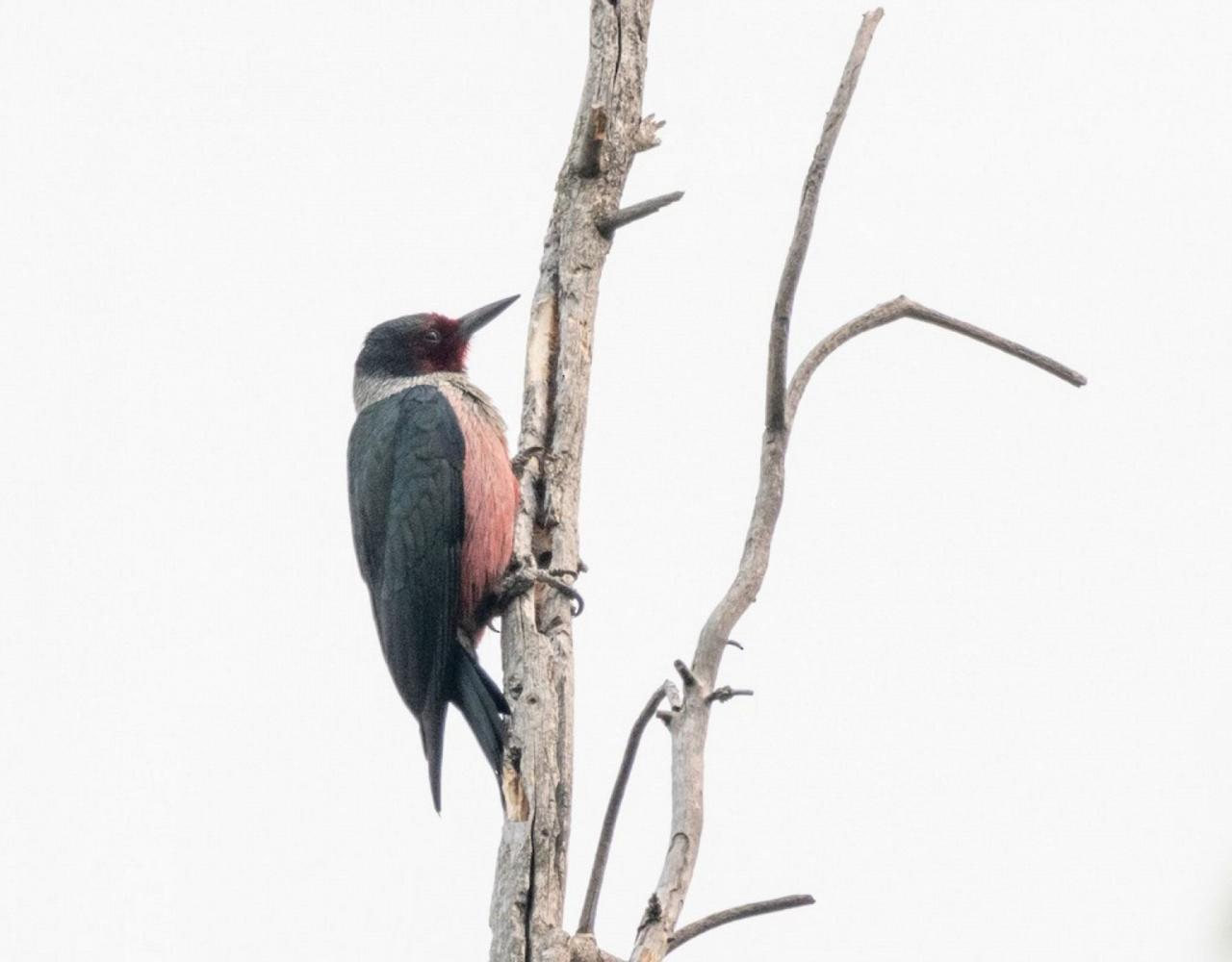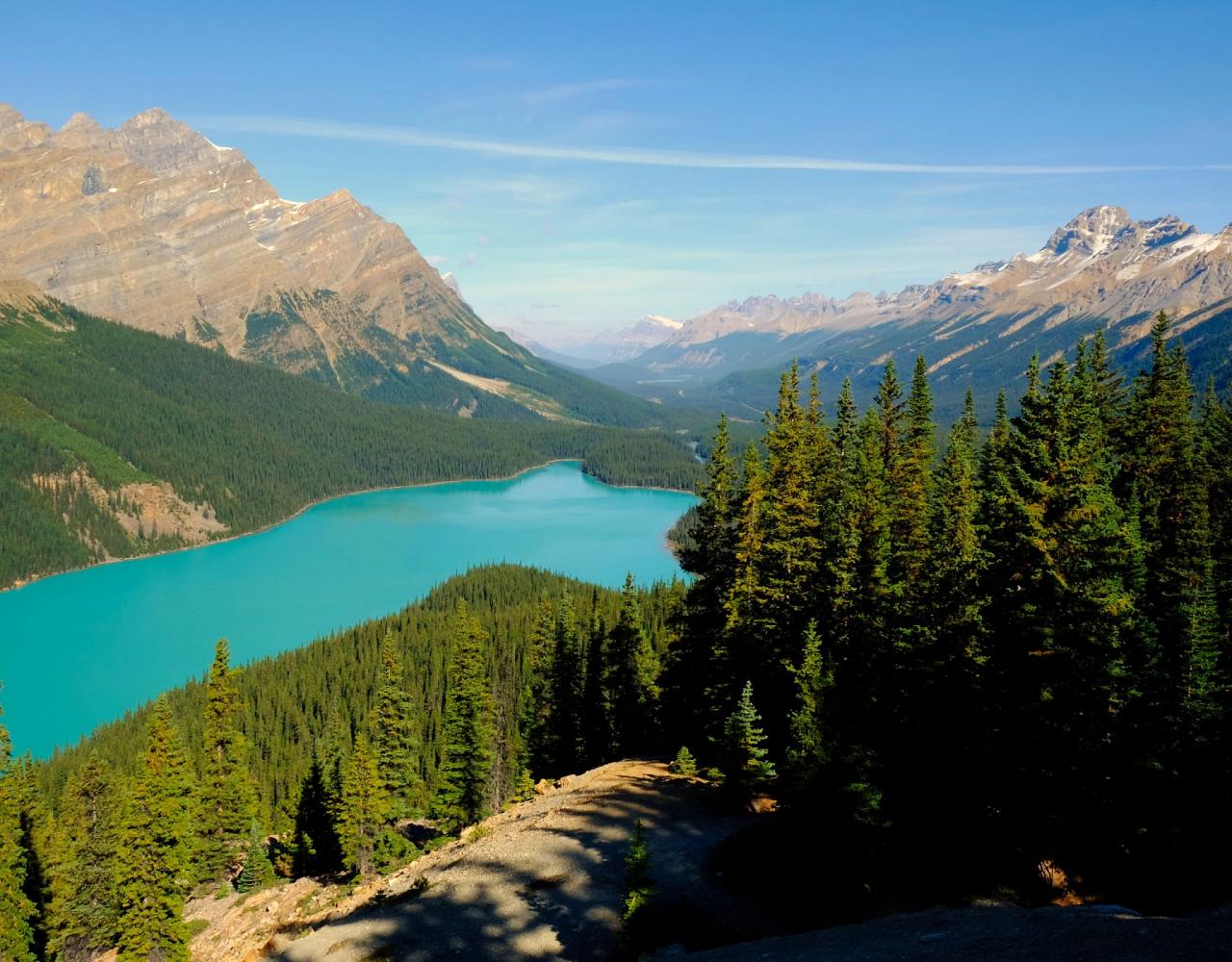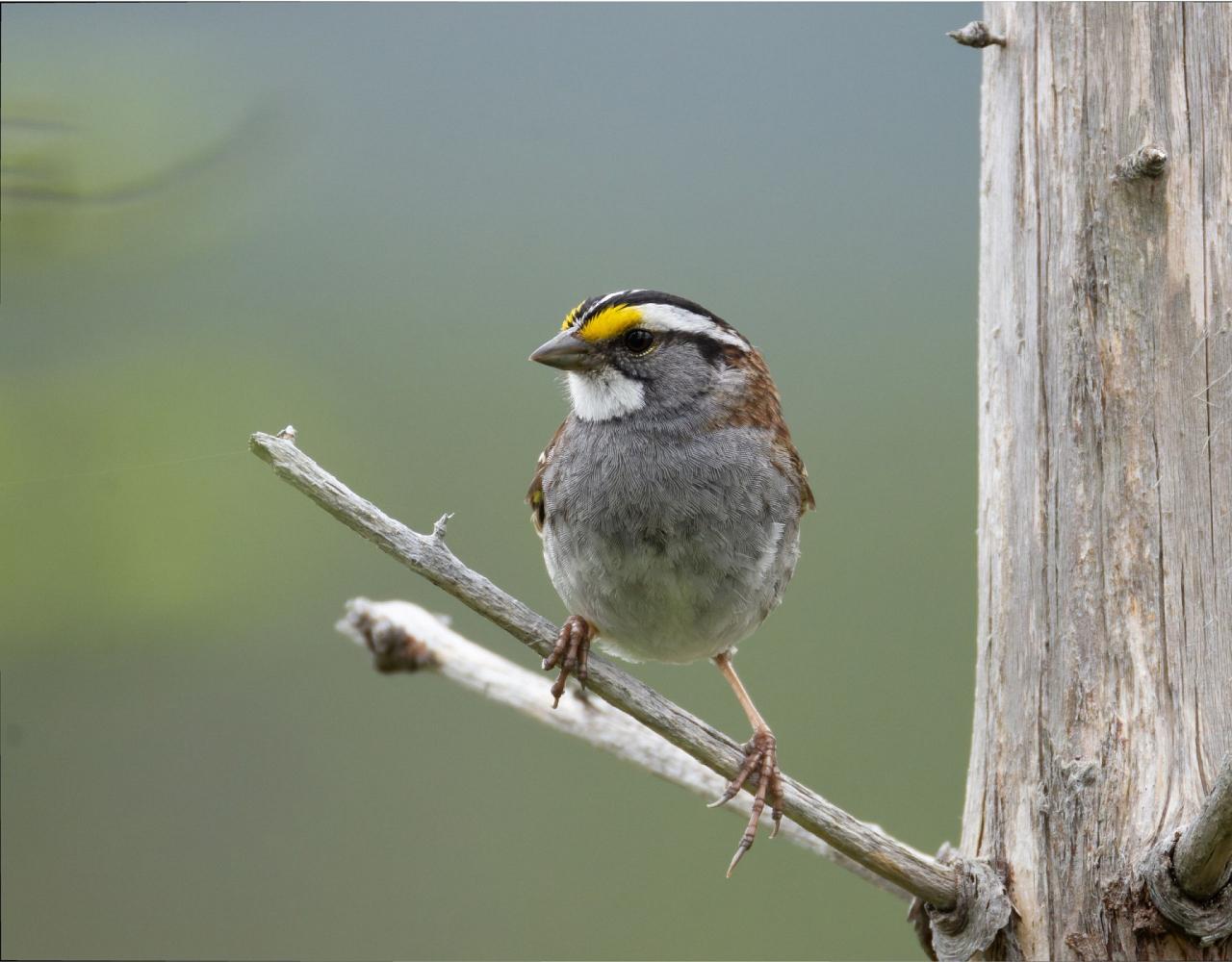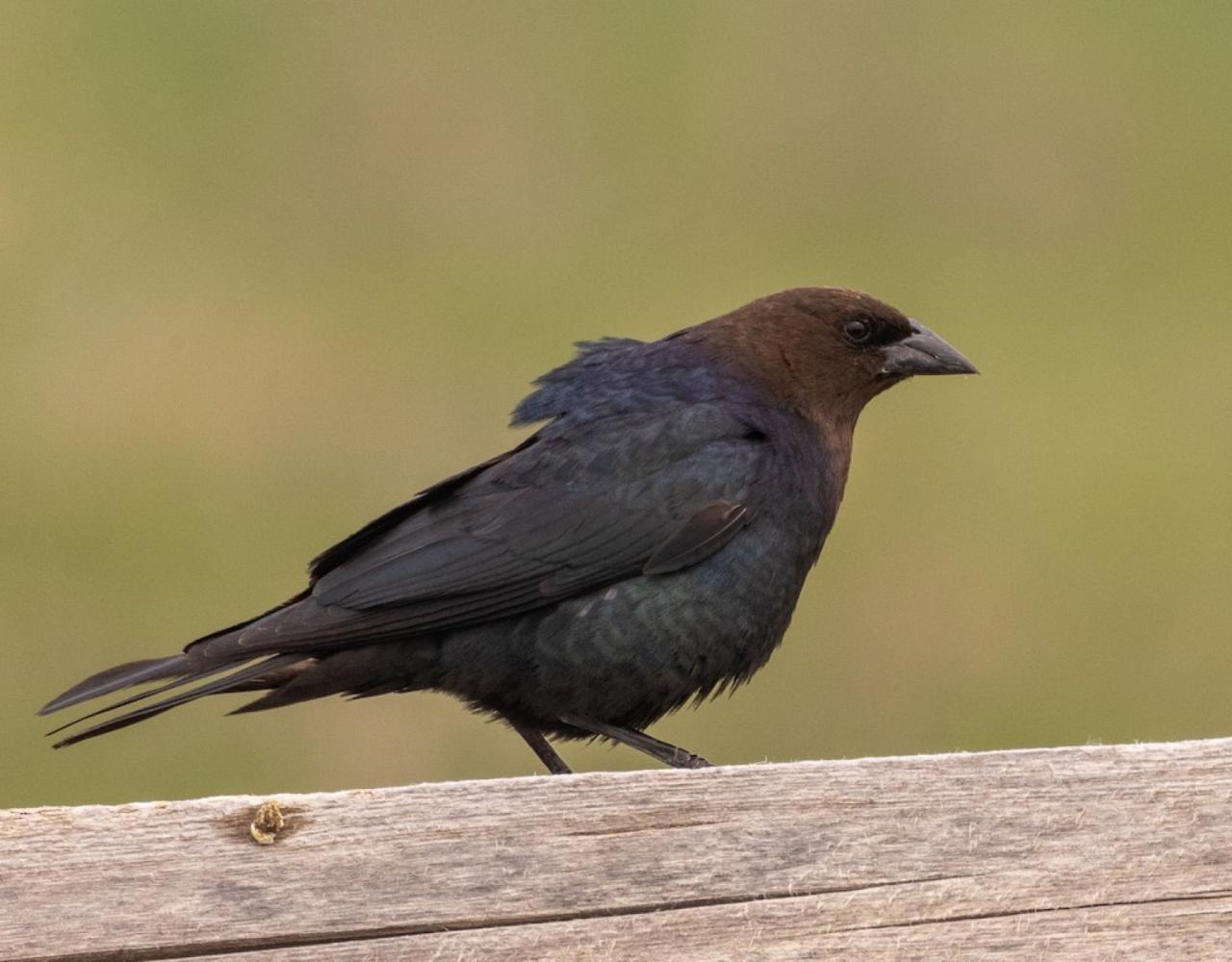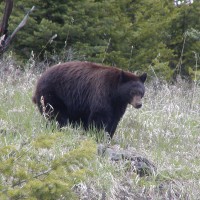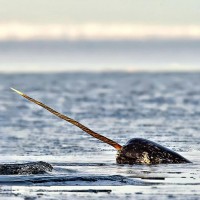- Overview
- Full Itinerary
- Photo Gallery
- Costing
- Travel Details
- Trip Reports
- Guide
- Map
- Know Before You Go
- Other Trips You May Like
Naturalist Journeys returns to the magnificent Canadian Rockies in 2025, this time with an itinerary that takes in additional scenic wonders! Join us for an exciting birding and wildlife tour that traverses western Canada, ending in Vancouver. Experience a stunning array of diverse habitats from the prairies to mountains and the Pacific coastline that will leave you in awe. On this well-tested route we find an excellent array of classic western bird species, adding iconic wildlife and abundant summer wildflowers to create an unforgettable trip.
We start in Calgary and spend two full days exploring the prairies, wetlands, and foothills of the Rockies. Here we search for prairie specialists like Sprague’s Pipit and Chestnut-collared Longspur as well as wetland species like White-faced Ibis and Black-necked Stilt. Then we head to the legendary Banff National Park, in the heart of the Canadian Rockies. We spend two days here to soak in the beautiful mountains and look for Great Gray Owl as well as mountain species including Boreal Chickadee and Three-toed Woodpecker. Banff is undoubtedly one of the best places in Canada to see wildlife and we keep our eyes peeled for Grizzly Bear, Moose, and other large fauna. Our next stop is in neighboring British Columbia as we head west to the Okanagan Valley, renown for its vineyards and lakes. Indulge in a winery tour and tasting after looking for Virginia Rail, Canyon Wren, and California Quail. Our last stop is Vancouver, on the scenic coast of British Columbia, where we visit coastal and inland birding hotspots to search for Harlequin Duck, Varied Thrush, and Red-breasted Sapsucker.
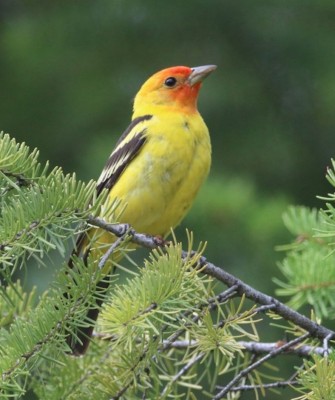

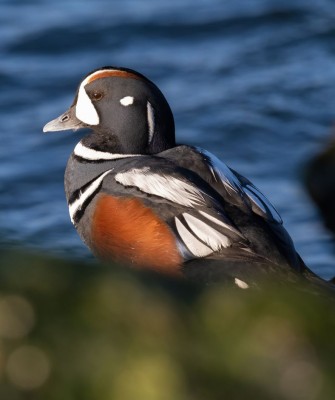
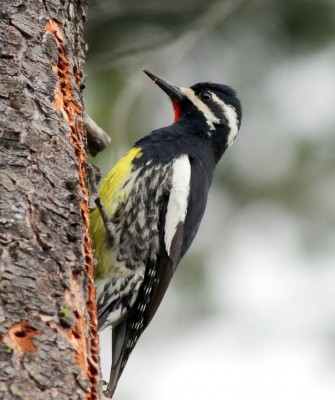
Tour Highlights
- Search for prairie species such as Thick-billed and Chestnut-collard Longspur
- Explore iconic Lake Louise and Banff National Park in the heart of the Canadian Rockies
- Look for Grizzly and Black Bears, Moose, Elk, and Coyote
- Enjoy local food and a wine tasting in the famous Okanagan Valley where we search for Lewis’s Woodpecker and Flammulated Owl
- Search for western forest species including Great Gray Owl, Three-toed Woodpecker, and Boreal Chickadee
- Explore scenic Manning Provincial Park, the most popular park in British Columbia, a sister park to Washington’s rugged North Cascades
- Visit Vancouver and search a variety of habitats for Pelagic Cormorant, Varied Thrush, and Black-chinned Hummingbird
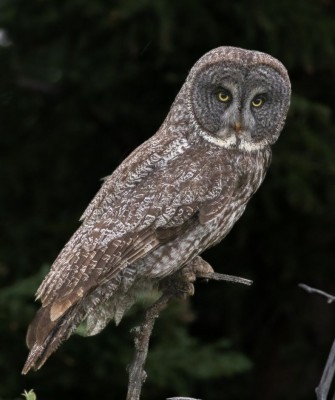
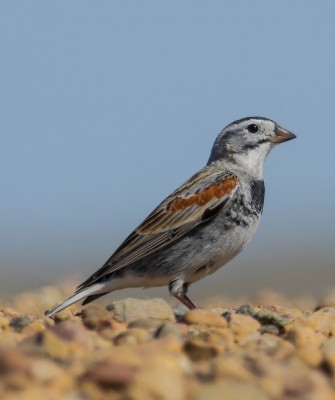
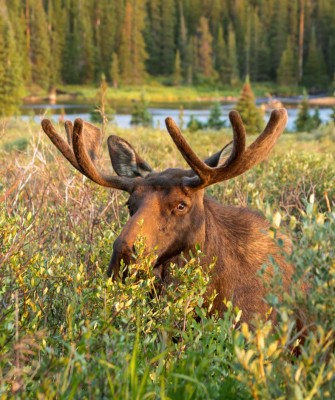
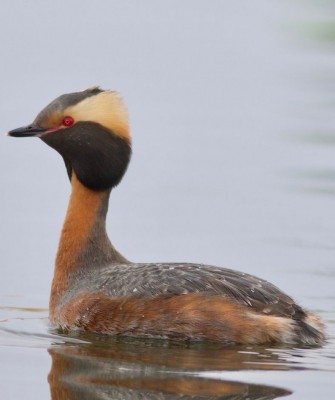
Trip Itinerary
Itineraries are guidelines; variations in itinerary may occur to account for weather, road conditions, closures, etc. and to maximize your experience.
Mon., June 16 Arrivals in Calgary
Welcome to Calgary! Nicknamed “Cowtown” due to its long history of being a cattle ranching frontier in the 1800s, Calgary is the largest city in the province of Alberta. It is located in the transitional zone between the Canadian Rockies and the prairies. This variety of habitats make it a great area to start our western Canada bird list.
In the afternoon, we visit some wetlands in the city for a good introduction to birds of the area. In the evening, we enjoy a welcome dinner to get to know our guides and fellow travelers.
Accommodations at Wingate by Wyndham Calgary Airport (D)
Tues., June 17 Prairie Birding & Wildflowers | Kinbrook Island Provincial Park
Today we travel east and spend some time searching for some of the prairie specialties in the area. The term “prairie,” which is derived from the French word “meadow,” often conjures images of monotonous flatlands, but prairies have great diversity. With varied topography and a diversity of beautiful wildflowers, this habitat is home to many species we hope to see, including Long-billed Curlew, Sprague’s Pipit, Chestnut-collared Longspur, Thick-billed Longspur, Pronghorn, deer, and gophers.
After lunch, we visit Kinbrook Island Provincial Park, located on Lake Newell, a large reservoir constructed in the early 1900s. Here we have the opportunity to see woodland species such as Least Flycatcher and Baltimore Oriole as well as comparing both Eastern and Western Kingbirds side by side. The adjacent marshes give us the possibility of White-faced Ibis, secretive American Bittern, and the always elegant looking Black-necked Stilt.
On our way back to Calgary, we visit an established colony of Purple Martin, the largest swallow species north of Mexico.
Accommodations at Wingate by Wyndham Calgary Airport (B,L,D)
Wed., June 18 Calgary’s Birding Hotspots
Today is our last day in Calgary and we make the most of it! We head south to Frank Lake, a restored wetland that is managed by Ducks Unlimited and listed as an Important Bird Area. Known as one of the best birding spots in the Calgary area, we hope to see nesting colonies of American White Pelican, California Gull, and Double-crested Cormorant. In the open water sections of the lake, we look for Western Grebe, Eared Grebe, and Ruddy Duck, which are typically abundant here. Along the shallow edges of the lake, we search for Wilson’s Phalarope, known for their unique method of hunting prey by spinning around frantically on the water to stir up invertebrates.
In the afternoon, we stop at a site to observe nesting Prairie Falcon and Rock Wren. Prairie Falcon build their nests on sheer cliff faces, while Rock Wren use a rock crevice, but are known to build a walkway to the site out of pebbles. In the foothills area below the cliffs, we hope to see Mountain Bluebird, Bobolink, Black Tern, and possibly Evening Grosbeak.
Accommodations at Wingate by Wyndham Calgary Airport (B,L,D)
Thurs., June 19 Banff National Park
This morning, we depart Calgary early and head to Banff National Park! One of the most famous national parks in the world, Banff typically sees over 4-million visitors a year. While known for its stunning mountain landscapes of the Canadian Rockies and megafauna like Grizzly Bear and Elk, Banff National Park is also great for birding!
On our way to Banff, we stop at some roadside marshes in hopes of hearing the exceptionally secretive Yellow Rail, which is probably one of the hardest birds to find in North America. We may also see LeConte’s and Nelson’s Sparrows if we’re lucky. As we continue farther into the transitional foothills and boreal forest habitat, we look for Great Gray Owl, a much sought-after species! Songbirds we may find in these forests include Cape May Warbler, Blue-headed Vireo, and Western Flycatcher.
In the afternoon, we head to our lodge in the national park, our home for the next two nights. Our lodge is located just outside of the town Banff, in a quieter location where we soak in the surroundings of this beautiful area.
Accommodations at the Buffalo Mountain Lodge (B,L,D)
Fri., June 20 Banff National Park | Johnston Canyon | Vermilion Lakes | Cave & Basin Marsh
Awaken to gorgeous mountain views right from your window. We have the entire day to explore this exciting park!
Our first stop in the park is Johnston Canyon. This magical canyon with a teal-colored creek running through it will leave you in awe. Not only is it incredibly scenic, but we hope to see American Dipper, North America’s only aquatic songbird. This dark colored species often bobs up and down while perched on a rock in fast moving streams. Western Flycatcher and Pacific Wren are also seen here regularly and if we’re lucky, Black Swift.
Next, we head to Vermilion Lakes, located just outside the town of Banff. Encompassing three picturesque lakes surrounded by wetlands, Vermilion Lakes has great views of Mt. Rundle in the background. In this area, we hope to see pairs of Common Loon, Lincoln’s Sparrow, lively American Redstart, and Northern Waterthrush. Near the lakes, we walk the forested Fenland Trail. Named after a ‘fen’, which is a type of wetland that is mainly fed by groundwater; this area also provides refuge for many birds and mammals. Here we search for several mountain species such as Boreal Chickadee, distinguished from other chickadee species by its brown cap, the hyperactive Golden-crowned Kinglet, Blackpoll Warbler, and American Three-toed Woodpecker.
After lunch, we visit Cave and Basin Marsh. Comprised of a wetland, the marsh is filled from hot springs that flow out of the lower slopes of Sulphur Mountain. Enjoy excellent views of the Bow River, which originates in the park and flows over 300 miles to the prairies. This wetland area is great for birding and has an abundance of Cinnamon Teal, secretive Sora, Willow Flycatcher, and Yellow-headed Blackbird. On the nearby forest trails we look for Cassin’s Vireo and Townsend’s Warbler.
After a full day of amazing views and great birding, we head into town for dinner. In the evening, we go for a drive to search for Black and Grizzly Bear, Elk, Moose, and Bighorn Sheep. What an exciting way to end the day!
Accommodations at the Buffalo Mountain Lodge (B,L,D)
Sat., June 21 Lake Louise | Canada’s Famous Okanagan Valley
Today is mostly a travel day as we head toward Kelowna, in the Okanagan Valley. We break up the 5.5-hour drive with birding stops along the way.
As we head out of Banff National Park, we stop at Lake Louise. One of the most visited spots in the park, it’s easy to see why! The beautiful turquoise lake is surrounded by mountains that offer breathtaking views in every direction. Once an outpost at the end of the Canadian Pacific Railway, this area now offers fantastic skiing and hiking opportunities.
We then say goodbye to Alberta and head west into British Columbia. Stopping at Rogers Pass, located in Glacier National Park within the Selkirk Mountains, we hope to see the only Magnolia Warblers of the tour. We continue our scenic drive, stopping in the town of Revelstoke for lunch. Carrying on our journey, we stop in Salmon Arm to look for Clark’s Grebe.
We arrive in Kelowna around dinner time and head to a local restaurant near our lodge.
Accommodations at Manteo at El Dorado Resort (B,L,D)
Sun., June 22 Okanagan Valley | Robert Lake | Flammulated Owl Prowl
Today we begin our exploration of the Okanagan Valley. This region, located between the Cascade and Columbia mountain ranges, is known for its sunny weather, many beautiful lakes, and countless vineyards and orchards lining the hillsides. One of the main features of the valley is Okanagan Lake. At 84 miles long, it has many sandy beaches along its shoreline and is a draw for many recreationalists.
We spend our first morning in the Okanagan exploring around Kelowna and Lake Country. Here, we hope to encounter our first California Quail, with their unmistakable teardrop shaped plume. Other species we likely see are Black-chinned Hummingbird, Cassin’s Finch, Black-headed Grosbeak, and colorful Lazuli Bunting. Nest boxes for Western Bluebird line the roadside and we keep our eyes peeled for them as well.
In the late afternoon, we stop by Robert Lake, a unique alkali salt flat with over 200 bird species recorded. This is a good spot for Virginia Rail and we listen for their grunt calls and if we’re lucky, maybe even see one of these secretive birds. We then head back to our hotel for an afternoon break from the summer heat in the Okanagan Valley.
Before dinner, we venture out to some nearby rocky cliffs where it is possible to see Rock Wren and Canyon Wren, a small bird with a big voice that is often heard before seen. We keep our eyes peeled to the skies above for raptors as well.
After dinner, we have an exciting optional evening outing to search for Lewis’s Woodpecker. This uniquely patterned woodpecker flies like a crow, often forages like a flycatcher, and is a real treat to see! After the sun has set, we look for both Flammulated Owl and Common Poorwill. A great end to the day.
Accommodations at Manteo at El Dorado Resort (B,L,D)
Mon., June 23 South Okanagan | Wine Tasting | Scenic Manning Provincial Park
Today we say goodbye to the Okanagan Valley as we continue our journey, but not before exploring the area south of Okanagan Lake. We search for some of the areas specialties, including Williamson’s Sapsucker and Gray Flycatcher, and we have another chance at Lewis’s Woodpecker. Further south, we stop at Vaseux Lake, which is a shallow lake that lies along the Okanagan River. Acrobatic White-throated Swift, along with Rock and Canyon Wrens are the main birds we hope to see here.
A visit to the Okanagan Valley wouldn’t be complete without sampling some local wine! After lunch, we tour a local winery and taste some of the wines this area is famous for. We then head east to Manning Provincial Park and make a short stop in hopes of seeing Chukar, an upland game bird once introduced that has now become established in parts of western North America.
In late afternoon, we arrive at our home for the night, Manning Park Resort, located in the Cascade Mountains.
Accommodations at Manning Park Resort (B,L,D)
Tues., June 24 Manning Provincial Park | Vancouver | Boundary Bay
This morning, we explore Manning Provincial Park. Established in 1941, the park is 320 square miles and borders North Cascades National Park across the border in the United States. One of the most popular provincial parks in British Columbia due to its location in between the populous areas of the coast and Okanagan Valley, Manning Provincial Park boasts diverse habitats that support over 200 bird species and a variety of mammals including Black Bear, Coyote, Beaver, and Marmot. The park is unique because of the intersection between species from the coast and the interior. Both Dusky Grouse and Sooty Grouse can be found here, as well as both the coastal and interior subspecies of Steller’s Jay. We also hope to see the stunning Red-breasted Sapsucker and Chestnut-backed Chickadee.
After lunch, we head east to Vancouver, our base for the next two nights. If time allows, we may visit Boundary Bay for our first taste of coastal birding.
Accommodations at Delta Hotel Vancouver (B,L,D)
Wed., June 25 Vancouver
Awaken in the beautiful, coastal city of Vancouver! The largest city in British Columbia, and one of the largest in Canada, Vancouver is known for its stunning scenery, great recreation opportunities, and having the largest port in Canada. We spend our last full day exploring some of the coastal and inland hotspots in this great city.
After breakfast, we head to the Tsawwassen Ferry Jetty to look for both Pelagic and Brandt’s Cormorants, the stout Black Oystercatcher, extravagant looking Harlequin Duck, and a variety of gulls. As we move inland, we search for Anna’s Hummingbird, Hutton’s Vireo, Black-throated Gray Warbler, and hopefully get a chance to see Band-tailed Pigeon, a large dove typically found in montane forests in the west.
In the afternoon, we visit Cypress Mountain, which is a ski area in the winter and a great spot for high elevation bird species in the summer. We hope to find the boldly patterned Varied Thrush, along with Red-breasted Sapsucker, and possibly Northern Pygmy-Owl.
In the evening, we gather for a final celebratory dinner and recount the highlights of our time together.
Accommodations at Delta Hotel Vancouver (B,L,D)
Thurs., June 26 Departures
Depending on departure flights, we may have time for some birding in the morning. Some may wish to stay on at leisure to explore this lovely city and its many attractions. (B)
Cost of the Journey
The cost of the journey is per person based on occupancy: $7,990 DBL / $9,305 SGL, from Calgary, departing Vancouver. This cost includes all accommodations, meals as specified in the itinerary, professional guide services, other park and program entrance fees and miscellaneous program expenses. This cost does not include: round-trip transportation from your home city to Calgary and from Vancouver, optional activities, or items of a personal nature such as laundry, telephone charges, maid gratuities, or beverages from the bar.
Travel Details
Please plan to make air travel plans only after the minimum group size has been met. We will send you a confirmation email as soon as the trip has been confirmed.
Arrival Airport: Calgary International Airport (YYC)
Arrival Details: Please plan flights to arrive June 16, 2025, no later than 4:00 PM
Departure Airport: Vancouver International Airport (YVR)
Departure Details: Please plan flights to depart on June 26, 2025, at your leisure
Travel Tips: If you arrive early to explore Calgary or rest up from your travels, you can book an early night at our first night hotel, the Wingate by Wyndham Calgary Airport by booking online or calling +1 587 393-0700. Please send us the confirmation number so you won't have to switch rooms when the tour starts.
Entry Requirements: See "Essential Information" section under the "Know Before You Go” tab.
Browse below for trip reports and species lists from past versions of this and other tours from this destination.
Arctic
- July 2022 (Birds, Bears, and Belugas)
- July 2023 (Birds, Bears & Belugas)
Canada
- June 2017
- July 2018
- July 2019
-
Stephen Grace

Stephen is an award-winning author, natural history educator and conservationist. He has also contributed to documentary films, and his nature photography has been widely published. Over the past two decades, he has introduced groups of travelers to nature and culture in destinations as varied as Uganda, New Zealand and Alaska.
After moving from Colorado to the Oregon coast, Stephen was captivated by the sight of a Tufted Puffin carrying fish back to its burrow, and the first time he heard a Swainson’s Thrush sing, he knew his life would never be the same. He has been studying birds and sharing their beauty with people ever since.
Formative experiences during Stephen’s journey as a naturalist have included tagging along as a teenager with his grandparents in Madera Canyon, where he absorbed their love of Arizona’s sky islands; helping people with different ability levels experience the Yellowstone ecosystem when he lived in Jackson Hole, Wyoming; and sailing aboard a historic schooner to share the wonders of the Salish Sea with students.
Now based in Port Townsend, Washington, Stephen explores the Pacific Northwest by backpacking, paddleboarding, snorkeling, biking, trail running, and skiing. His wide-ranging natural history pursuits include coring trees to count their growth rings, identifying bats by analyzing their biosonar signals, hunting mammoth tusks in Pleistocene bluffs, searching for the elusive Rubber Boa, preserving native prairie, raising awareness about plankton, and leading sea slug safaris.Other trips with Stephen Grace
-
 Olympic Peninsula Spring Explorer CLOSED - Check out Vancouver Island: Coastal Birds, Bears & Whales!May 5 - 12, 2025
Olympic Peninsula Spring Explorer CLOSED - Check out Vancouver Island: Coastal Birds, Bears & Whales!May 5 - 12, 2025 -
 Birding Canyon Country FULL - See our September departure!May 18 - 26, 2025
Birding Canyon Country FULL - See our September departure!May 18 - 26, 2025 -
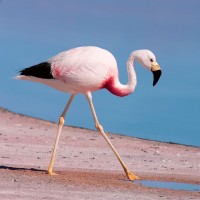 Peru's Avian & Archaeological WondersJuly 11 - 21, 2025, w/Machu Picchu extension
Peru's Avian & Archaeological WondersJuly 11 - 21, 2025, w/Machu Picchu extension -
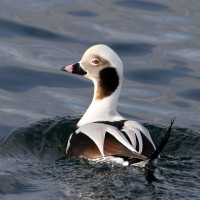 Olympic Peninsula Fall Explorer FULL - Check out Vancouver Island: Coastal Birds, Bears & Whales!September 4 - 11, 2025
Olympic Peninsula Fall Explorer FULL - Check out Vancouver Island: Coastal Birds, Bears & Whales!September 4 - 11, 2025 -
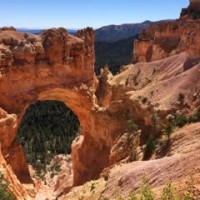 Birding Canyon CountrySeptember 16 - 24, 2025
Birding Canyon CountrySeptember 16 - 24, 2025 -
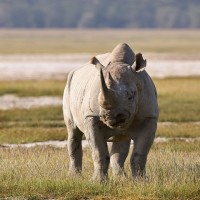 Northern Tanzania: Wildlife & Birding Safari FULL - Check out Southern Tanzania!October 12 - 23, 2025, w/Amboseli & Nairobi National Parks extension
Northern Tanzania: Wildlife & Birding Safari FULL - Check out Southern Tanzania!October 12 - 23, 2025, w/Amboseli & Nairobi National Parks extension -
 Thanksgiving in Trinidad & TobagoNovember 22 - December 1, 2025
Thanksgiving in Trinidad & TobagoNovember 22 - December 1, 2025 -
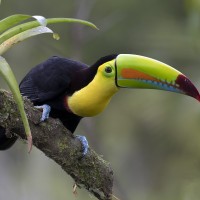 Christmas in Costa Rica December 22 - 29, 2025
Christmas in Costa Rica December 22 - 29, 2025 -
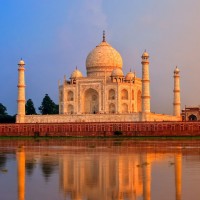 India: Birds, Tigers & the Taj MahalJanuary 27 - February 10, 2026
India: Birds, Tigers & the Taj MahalJanuary 27 - February 10, 2026
-
Essential Information +
Pace & Protocols +
Packing List +
Suggested Reading List +
Useful Links +
Photo credits: Banners: Western Bluebird, Banff National Park, Harlequin Duck, Canyon Wren (Gavin McKinnon) Thumbnails: Western Tanager, Grizzly Bear, Harlequin Duck, Williamson’s Sapsucker, Great Gray Owl (Gavin McKinnon), Thick-billed Longspur (Gavin McKinnon), Moose, Horned Grebe (Gavin McKinnon)





